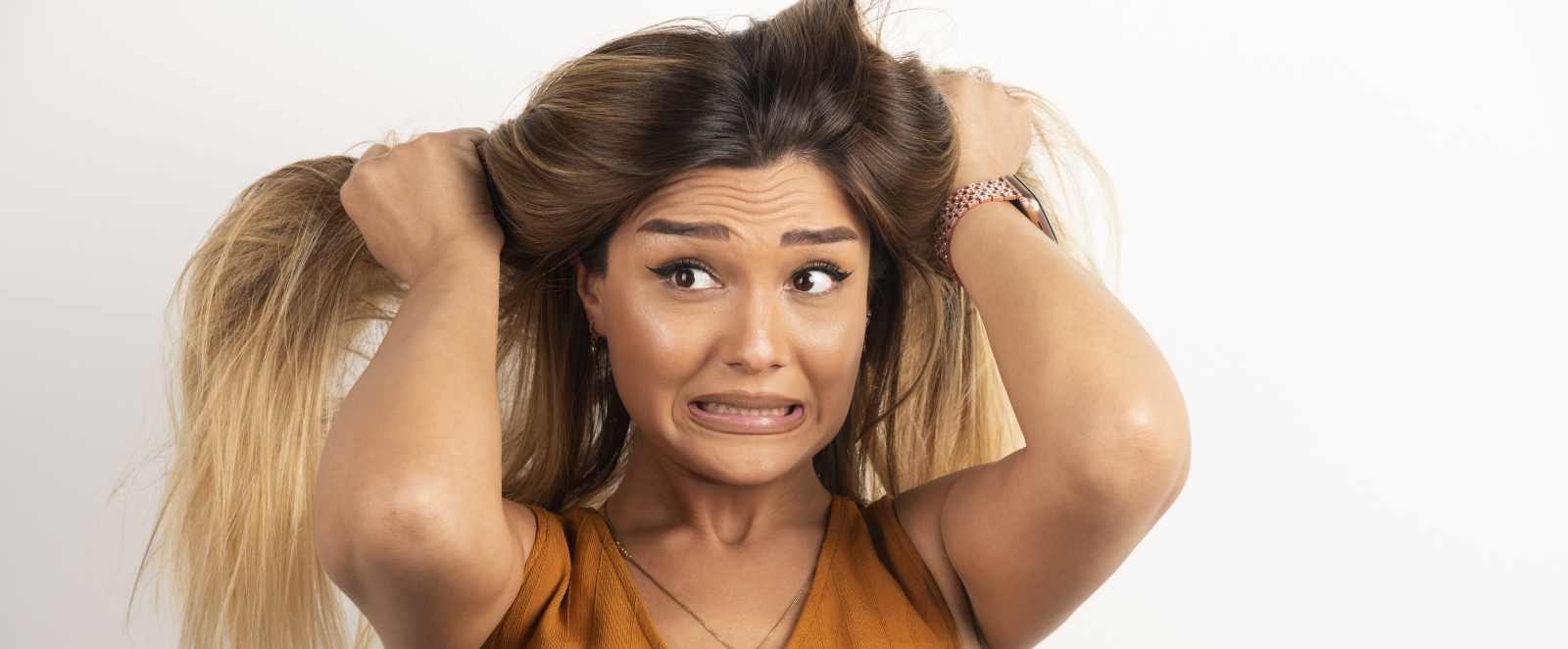Top Hair Care Mistakes and How To Avoid Them
Hair Care Mistakes – I bet one of the first things people notice about you is your hair. It’s not realistic to expect perfect hair every day. No matter your shampoo or care routine, bad hair days happen. Once you accept this, you can better focus on maximizing good hair days. To do that, you need to identify and eliminate what’s causing bad hair days. Here are ten critical hair care mistakes you need to know.
Hair Care Mistakes
6. Poor Hair Care at Night
Neglecting your hair’s needs at night can lead to damage over time. Cotton pillowcases, for example, can cause friction that weakens hair strands, leaving them prone to breakage and tangles. Switching to silk or satin pillowcases significantly reduces friction, allowing your hair to glide smoothly and minimizing damage. Additionally, consider loosely tying your hair or braiding it before bed to prevent tangles and knots that form during the night.
To further protect your hair overnight, you can use a silk or satin scarf or bonnet. Ensure it’s not too tight to avoid scalp tension, which can lead to discomfort or hair loss over time. Giving your hair a little TLC before you sleep—by moisturizing with a light leave-in conditioner or serum—will also help maintain hydration and reduce breakage. Consistent nightly care can make a significant difference in your hair’s health and appearance.
7. Be Gentle with Tangles
Aggressively tugging through tangles is a surefire way to damage your hair. Knots are inevitable, especially for long, curly, or textured hair types, but how you handle them makes a huge difference. Start detangling by applying a leave-in conditioner or detangling spray to add slip and reduce friction. Use a wide-toothed comb or your fingers, beginning at the tips and working your way up to prevent unnecessary stress on your hair.
Be patient during this process—ripping through knots only causes split ends and breakage. You can also try sectioning your hair for easier detangling and work gently through each part. If you encounter stubborn knots, use your fingers to gently separate the strands instead of pulling. This approach ensures your hair remains strong, healthy, and smooth without unnecessary damage or breakage.
8. Avoid Stressing Your Hair
Constantly tying your hair in tight styles, such as high ponytails or buns, can place immense strain on your scalp and hairline. This tension often leads to traction alopecia, a form of hair loss caused by prolonged pulling. Opt for looser styles to reduce stress on your roots and allow your hair to move freely. Use soft, cloth-covered hair ties instead of rubber bands that can snag and break strands when removed.
Rotating your hairstyles regularly also prevents the same areas from being consistently pulled. When you do style your hair, be mindful of tightness and prioritize scalp comfort. Give your hair breaks by leaving it down whenever possible or securing it in gentle braids. These changes can prevent long-term damage and preserve your hairline, keeping your strands healthy and resilient over time.
9. Skipping Conditioner
Skipping conditioner in your hair routine can leave your strands vulnerable to breakage, dryness, and overall weakness. Conditioners provide essential moisture, seal the hair cuticle, and replenish nutrients lost during washing. For best results, apply conditioner to the lengths and ends of your hair, avoiding the scalp to prevent buildup. Allow it to sit for a few minutes so it can deeply penetrate and nourish your strands before rinsing thoroughly.
Incorporating a deep conditioning treatment weekly can offer even more hydration and repair, especially if your hair is chemically treated, colored, or prone to dryness. This extra step strengthens the hair shaft, reduces split ends, and promotes elasticity. Consistent conditioning helps maintain your hair’s softness, shine, and overall resilience, protecting it from everyday wear and tear.
10. Sun Exposure
The sun’s harmful UV rays don’t just damage your skin—they can also wreak havoc on your hair. Prolonged sun exposure strips away natural oils, leaving your hair dry, brittle, and prone to breakage. Protecting your hair from the sun is crucial, especially during the hotter months. Consider wearing hats, scarves, or using hair products with UV filters to shield your strands. These steps minimize damage while keeping your hair hydrated and protected from environmental stressors.
Sun-protective sprays or serums into your routine offers an additional layer of defense. Focus on applying these products before heading outdoors to maintain moisture and prevent sunburned scalps. Spending time in the sun is inevitable, but consistent care and protective measures keep your hair soft, shiny, and resilient despite harsh weather conditions. Enjoy holidays in lake macquarie but always take care of your hair.
Nicole’s Opinion
As a top hairstylist with years of experience, I’ve seen every hair care mistake imaginable, but I believe overusing heat styling tools is the most damaging. Excessive heat leaves hair fragile, lifeless, and susceptible to breakage, a problem I’ve faced firsthand. Early in my career, I relied heavily on curling irons and flat irons, unaware of the long-term effects on my own hair. Eventually, I noticed my ends were thinning and becoming brittle.
To fix this, I prioritized heat protection, using sprays before any heat exposure and setting tools to lower temperatures. I switched to heat-free styling techniques like braiding and overnight twists. The transformation in my hair health was remarkable—I gained back shine, softness, and resilience. I often tell my clients that the key to gorgeous hair isn’t how much heat you use but how well you protect it and treat it with care.
Why is regular hair care important for maintaining healthy hair?
Regular hair care prevents breakage, split ends, and scalp issues. Healthy hair requires consistent upkeep, such as shampooing, conditioning, and trimming, to keep it strong and resilient. Neglecting these basics can lead to costly treatments and a dull appearance. Proper maintenance ensures your hair stays vibrant, reducing the need for corrective measures.
What are common hair care mistakes people make?
Over-washing, excessive heat styling, and using the wrong products are frequent mistakes. Over-washing strips natural oils, leaving hair dry. Too much heat damages hair cuticles, causing frizz and breakage. Using unsuitable products leads to build-up, which can weigh hair down. Avoiding these pitfalls helps your hair stay healthier and reduces the need for expensive treatments.
How can poor hair care practices increase costs?
Neglecting hair health often results in damage requiring professional intervention, like deep conditioning treatments or keratin therapy. Regular care is more cost-effective, as it minimizes damage and prolongs the time between costly salon visits. Avoiding expensive mistakes like overuse of chemical products keeps costs manageable.
Does good hair care enhance your overall appearance?
Yes, healthy hair greatly enhances personal appearance, boosting confidence and making a positive impression. Shiny, well-maintained hair can frame your face and highlight your features. It contributes to a polished look, which can be especially important for social interactions or professional settings.
How do heat and chemical styling affect hair health?
Frequent heat styling weakens hair strands and makes them prone to breakage. Chemical treatments can strip away natural moisture, causing long-term damage if overdone. Opting for heat protectants and balancing chemical treatments with hydrating products prevents unnecessary harm. This approach keeps your hair looking great while avoiding extensive repair costs.





Valentina
great put up, very informative. I’m wondering why not many other hairdressers tell us about this
You should continue your writing. I am sure, you have a huge readers’ base
already that appreciate your efforts!